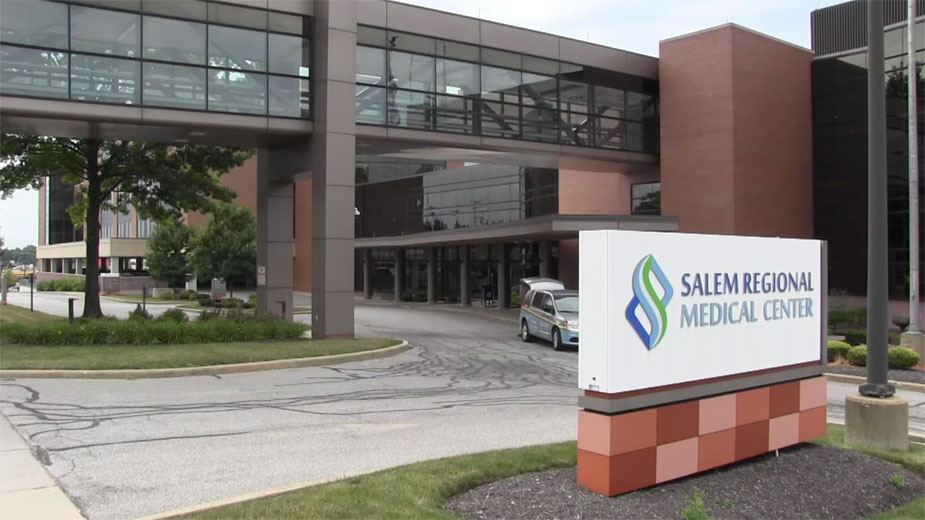Opiates Compound Addiction Epidemic in Mahoning Valley
YOUNGSTOWN, Ohio – The statistics Larry Moliterno cites are sobering.
Over the 10 years that Meridian HealthCare has operated its program that focuses on opiate addiction, the number of clients has risen more than tenfold, from fewer than 90 to more than 900.
“We’re getting about 10 folks a day walking into our building looking for services,” Moliterno, Meridian president and CEO, reports. Meridian has 12 locations, among them administrative offices in Boardman.
Moliterno and other agencies that offer addiction services report that cases involving opiates – particularly heroin – far outpace other drugs, even alcohol.
Ohio ranks second in the nation in overdose deaths, another grim statistic Moliterno cites. “In the state of Ohio, you’re twice as likely to die of a drug overdose than in a car accident,” he says.
According to a George Washington University study, substance abuse costs businesses $197 billion annually and 77% of substance abusers are employed. Workplace issues associated with alcohol and drug abuse are increased absenteeism, safety risks, increased employee turnover and higher health-care costs.
Meridian’s WorkLife division conducts pre-employment screenings, physicals and background checks, as well as onsite screenings and drug-free workplace training for 200 companies.
“Studies show if we engage more people in treatment, then emergency room visits decline, which affects health-care rates,” Moliterno says. “We also know if more people are engaged in treatment, we have a healthier workforce, fewer workforce complaints and less absenteeism.”
Meridian offers business owners an employee-assistance program. “If they have an employee who is struggling with addiction or mental health issues, they will come to us and engage in treatment,” Moliterno says. ”The employer hopefully has, at the end of the day, a much more dedicated employee if they can get the help that they need.”
Individuals addicted to opiates tend to lose their jobs “because they just can’t work,” says Cheryle Herr, a counselor at Family Recovery Center in Lisbon.
She reports the largest issue facing most of her agency’s clients is heroin addiction, followed by abuse of alcohol and marijuana.
“Someone who has an alcohol problem can be functioning. That’s different in an opiate population,” she says. “Once the addiction starts, their job performance goes downhill quickly because the biggest job of the day is finding enough of the drug to avoid going through withdrawal.”
In many cases, opiate and heroin addicts aren’t fired, she adds. “More often they don’t go back to work.”
If an individual takes advantage of the employee assistance program on his own, 90% of the time drugs or alcohol are involved, says Tracy Snyder, employee assistance programs coordinator at Compass Family & Community Services’ community solutions program in Warren.
“But if somebody is having job performance issues, that statistic is turned around: 90% of the time it will have something to do with drugs or alcohol and 10% of the time it won’t,” she adds.
“What we’re looking at is patterns,” that is, behaviors out of character for an employee, Snyder says. Among them are declining job performance, unreliability, frequent absences and a disheveled appearance.
Individuals who fail workplace drug tests tend to be marijuana users because traces remain in the body longer than other illicit drugs. “Marijuana stores in fat cells so it doesn’t metabolize out of the system quickly, as opposed to cocaine,” which lasts three days at most, Snyder says. After a single use it can be detected for seven days, she says, and for a regular user, it remains detectable 30 days.
Opiate addicts now represent the primary population at Gateway Rehab’s Neil Kennedy Recovery Clinic in Youngstown, reports Carolyn Givens, executive director. Patients require longer stays than formerly and the clinic rarely sees patients suffering only from alcoholism.
“You just don’t see that anymore,” Givens says. “Usually when people come in, they might be using multiple substances. A good 65% of them are heroin-related patients, if not more.”
In 2014, NKRC opened its first recovery house. “Now we have three recovery houses and hopefully we’ll be breaking ground in late June [on a fourth],” Givens says. “Part of our strategy is to expand on the residential side and make housing an option so as a person goes though detox they can graduate to a recovery home and still come onto the main campus.”
The Neil Kennedy Clinic’s strategy involves an “intensive level of counseling and therapeutic intervention,” coupled with treatment that employs drugs such as Suboxone and Vivitrol, Givens says.
“I would not recommend medication be given without therapy because you’re not going to change the cognitive behavior if you do,” she warns.
Among the issues the clinic copes with is recidivism, when clients begin to feel better and believe they can deal with their addiction on their own, she says. The problem is if they decide to go back to using drugs, the intensity of the high is “so much greater,” she points out.
That’s where the ability of first responders to use Narcan – a drug to treat overdoses – is essential. Awareness that emergency medical technicians can respond so quickly has led addicts to regard the odds of their being rescued in time “almost as a game,” she reports. “They take their life into their own hands.”
“No community is exempt from the issues of opiate abuse,” laments Kim Anglin, drug and alcohol administrator for the Mercer County Behavioral Health Commission in Mercer, Pa. Alcohol remains “the primary drug of choice,” she says, “but over the past four or five years we’ve seen a large growth in the individuals who report heroin or synthetic opiates for their primary drug of choice.”
As a nonprofit agency, the Mercer County Behavioral Health Commission focuses on a specific population, uninsured or underinsured individuals, Anglin says. The agency contracts with a network of providers who serve and deliver “all levels of care,” she points out.
“First and foremost, we try to help them remain in treatment,” she says. “The longer they stay in treatment, the more likely recovery is possible.” Many clients struggle with transportation, housing, legal and employment issues, Anglin adds.
Along with problems such as increased absenteeism and low productivity, workplace issues include stealing, says Kim DiPillo, director of operations for On Demand Opiate Recovery and On Demand Drug Testing in Austintown. Illicit drugs “cost a lot of money,” and police say such drugs “drive a lot of theft in the area.” That includes medication missing in nursing homes where addicts work.
In some instances, clients taking medication to treat their addiction stop taking it, and instead sell it so they can buy illicit drugs, then resume their prescribed medication just before going back in for testing.
Among the testing and treatment services On Demand offers is a drug screen unique to its program that deters clients from diverting the prescribed medication, she notes.
At Turning Point Counseling Services Inc. in Youngstown, the problems afflicting the client base are “a little bit different,” Nicole Pascarella, director of alcohol and drug programming, says.
“The clients we work with all have mental health disorders,” she says. “It’s a double-edged sword for us at times.” Turning Point offers co-occurring groups to address these individuals’ needs among its other services.
Because of complexity of the issues involved, treatment can take anywhere from a few months to a year. “It’s really individualized,” Pascarella says.
Copyright 2024 The Business Journal, Youngstown, Ohio.


